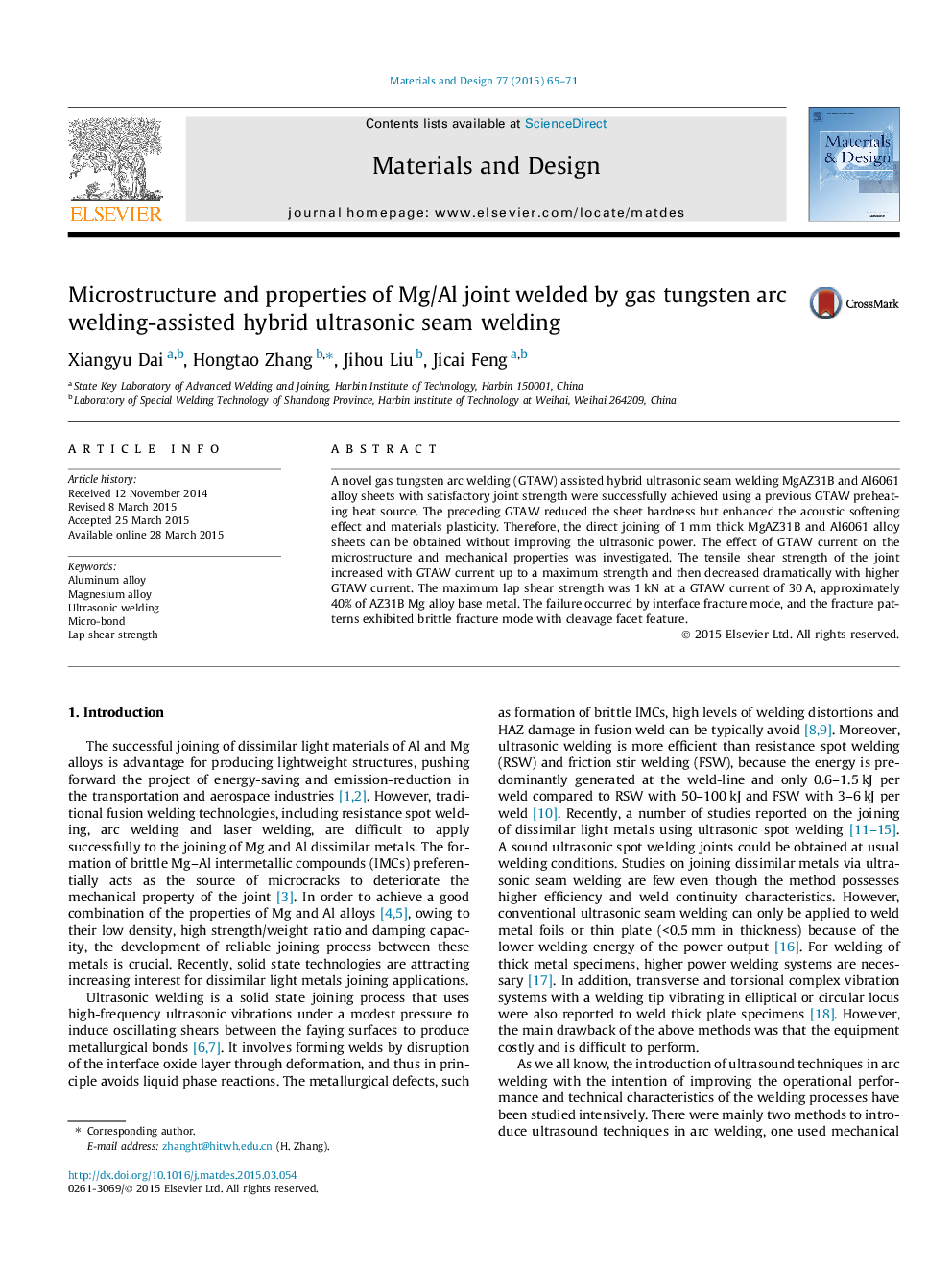| Article ID | Journal | Published Year | Pages | File Type |
|---|---|---|---|---|
| 828586 | Materials & Design (1980-2015) | 2015 | 7 Pages |
•Mg and Al were joined in solid state by hybrid ultrasonic seam welding.•The preceding GTAW heat source enhanced the acoustic bonding effect.•The maximum lap shear strength was 1 kN at a GTAW current of 30 A.
A novel gas tungsten arc welding (GTAW) assisted hybrid ultrasonic seam welding MgAZ31B and Al6061 alloy sheets with satisfactory joint strength were successfully achieved using a previous GTAW preheating heat source. The preceding GTAW reduced the sheet hardness but enhanced the acoustic softening effect and materials plasticity. Therefore, the direct joining of 1 mm thick MgAZ31B and Al6061 alloy sheets can be obtained without improving the ultrasonic power. The effect of GTAW current on the microstructure and mechanical properties was investigated. The tensile shear strength of the joint increased with GTAW current up to a maximum strength and then decreased dramatically with higher GTAW current. The maximum lap shear strength was 1 kN at a GTAW current of 30 A, approximately 40% of AZ31B Mg alloy base metal. The failure occurred by interface fracture mode, and the fracture patterns exhibited brittle fracture mode with cleavage facet feature.
Graphical abstractGas tungsten arc welding (GTAW) was introduced into ultrasonic seam welding of Mg and Al dissimilar metals for the first time as shown in (a). The preceding GTAW can preheat the sheet metal to enhance the weldability. Without improving the ultrasonic power, the direct joining of 1 mm thick Al and Mg alloys sheets was accomplished and the maximum lap shear strength was 1 kN at a GTAW current of 30 A, approximately 40% of AZ31B Mg alloy base metal, as shown in (b).Figure optionsDownload full-size imageDownload as PowerPoint slide
